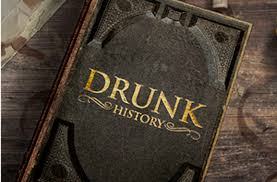‘I have this theory that your favourite Sherlock Holmes is the one you grew up with’ Amanda Field, author of The Wartime Files of Sherlock Holmes in Timeshift: ‘How to be Sherlock Holmes: the Many Faces of a Master Detective’ (BBC4, 12 January 2014).
It has been hard to escape Sherlock Holmes in 2014. He has been everywhere, not least on our television screens, since the transmission of the third season, as tantalisingly brief as the first two, of Stephen Moffat and Mark Gatiss’s Sherlock for BBC Cymru Wales, starring Benedict Cumberbatch in the title role and Martin Freeman as Watson. Eagerly awaited, Sherlock has been extensively reviewed and commented on. The coverage has been nearly all favourable, with one reviewer, Lucy Mangan in the Guardian (Monday 13 January) arguing of ‘His Final Vow’ that ‘I can’t be sure, but I think this final episode of Sherlock was perfect’. The Daily Telegraph (Serena Davies, 13 January) thought it equally good, with ‘His Final Vow’ ‘the best of the lot’, with ‘the best baddy since Moriaty’ (Charles Augustus Magnesson, played in an unnervingly reptilian manner by Lars Mikkelson). Even the Daily Mail gave the episode/series its favourite accolade: ‘Sherlock’s new press baron foe and more evidence of Left-wing bias’, using the fact that Magnesson was a foreign media mogul, and therefore a thinly-disguised stand-in for Rupert Murdoch, as evidence that the BBC had once again revealed its anti-Tory soul. You haven’t arrived until the Daily Mail attacks you.
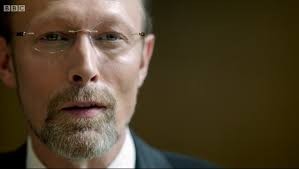
One of the best contributions to the Sherlock event was a BBC documentary from the Timeshift stable, ‘How to be Sherlock Holmes: the Many Faces of a Master Detective’ (BBC4, 12 January). It is this, as much as Sherlock itself (though I have enjoyed the series immensely), that has given rise to this blog (and many of the quirky, and sometimes surprising, facts included are unashamedly taken from this documentary). There are spoilers below, so beware if you have not yet seen the series and are planning to do so.
Taking as its starting point the fact that more than eighty actors have played Holmes on the professional stage and screen, the programme traced the evolution of the character from the late Victorian stage to his current small-screen incarnation, using interviews 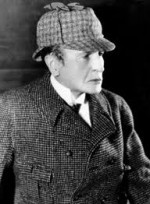 where possible. Telling the story of Sherlock’s screen history through the figure of Holmes William Gillette as Sherlockhimself is both obvious and extremely revealing, not only about the processes of adaptation, but also the construction of character through performance. There are few better examples where we can trace a clear lineage of representation, where actors’ interpretations have changed, sometimes gradually, inch by inch, and sometimes with great leaps, yet are still anchored in a recognisable set of character traits and attributes. It is fascinating that many of those traits did not originate with Arthur Conan Doyle, but with his first illustrator, Sydney Paget, or were accretions from stage interpretations: did you know, for example, that the famous deerstalker hat was added by a Victorian actor, William Gillette, who also coined the catch-phrase ‘Elementary, my dear Watson’? I didn’t either. And modernising Holmes to provide a fit with the period of the adaptation is a long-established part of the tradition.
where possible. Telling the story of Sherlock’s screen history through the figure of Holmes William Gillette as Sherlockhimself is both obvious and extremely revealing, not only about the processes of adaptation, but also the construction of character through performance. There are few better examples where we can trace a clear lineage of representation, where actors’ interpretations have changed, sometimes gradually, inch by inch, and sometimes with great leaps, yet are still anchored in a recognisable set of character traits and attributes. It is fascinating that many of those traits did not originate with Arthur Conan Doyle, but with his first illustrator, Sydney Paget, or were accretions from stage interpretations: did you know, for example, that the famous deerstalker hat was added by a Victorian actor, William Gillette, who also coined the catch-phrase ‘Elementary, my dear Watson’? I didn’t either. And modernising Holmes to provide a fit with the period of the adaptation is a long-established part of the tradition.
The Moffat/Gatiss Sherlock acknowledges this tradition and the debt to Conan Doyle’s original stories – more so than many big screen adaptations, especially those from the 1970s, and much more so than the other version of Homes currently on our TV screens, Elementary (CBS 2012 – ), with Johnny Lee Miller as Holmes and Lucy Liu as Dr Joan Watson. ‘His Final Vow’, for example, was based on ‘The Adventure of Charles Augustus Milverton’, and reworks some of its key features. Conan Doyle’s Milverton is, like Magnesson, a blackmailer, who is made rich by the information provided by a network of informants, who exercises a cold, sadistic power over his victims, and is regarded by Holmes as the most evil man in London. Holmes’s duplicitous seduction of, and engagement to, Magnesson’s PA is also a plot-line in the original version, as is the figure of the avenging woman, who is more than she appears to be. In the original, it is too late for this woman, whose reputation is already compromised, and it is she that murders Milverton in a surprise plot twist that is witnessed by Holmes and Watson (if you haven’t seen ‘His Final Vow’, I will say no more).
However, part of the attraction of Sherlock is the way in which it references not only Conan Doyle’s stories but also the long tradition of other representations. Gatiss willingly admits his debt to Christopher Lee, who played Mycroft in Billy Wilder’s The Private Life of Sherlock Holmes (1970) – terse, sarcastic, animated by sibling rivalry and the spider at the centre of the web of government. The suggestion of a possible homosexual connection between Holmes and Watson, with which Sherlock plays so humorously, is also played with in this film. At the very end of ‘His Final Vow’, in his parting words to Watson, Holmes speaks of a story his brother told him of ‘the east wind’ a terrifying force that destroys everything; ‘it takes us all in the end’ he says and ‘seeks out the unworthy and plucks them from the earth’. This is a reference to a wartime modernisation of Conan Doyle’s stories, Sherlock Holmes and the Voice of Terror (1942), in which Holmes (Basil Rathbone, a very famous and influential incarnation) and Watson (Nigel Bruce) do battle with Nazis: at the end of the film, Rathbone/Holmes also talks of the ‘east wind’, only here it refers directly to Fascism and its inevitable defeat – a more optimistic evocation.
Any actor playing Holmes faces the challenge of inhabiting, or at the very least negotiating, an established and expected set of character traits, even a fixed costume and props (deerstalker, curved meerschaum pipe), whilst attempting to bring something different to the role. Paget’s illustrations to the original text have been enormously influential, and many of the most famous incarnations have drawn on the physical silhouette he created: tall, thin, dark, swept-back hair, hunched thinking posture, restlessly athletic, a sense of a hawk about to strike (which is how Cumberbatch described Jeremy Brett’s performance in the Granada series of 1984-94). Just try to imagine Holmes as short and blond – it doesn’t quite work, does it?
Part of his fascination for actors has been that he has always been to a degree unknowable, held at a distance by the narrative device in Conan Doyle’s original of having Watson tell the stories. He has also, from the outset, been full of contradictions. Conan Doyle’s Holmes was a Victorian child of Empire (as was Watson, a soldier, in a more tangible way), who was simultaneously a sceptical man of science, an action hero (we learn he is an accomplished boxer and swordsman, an athleticism drawn on by Robert Downie Jnr in Guy Ritchie’s two recent film adaptations), and a loner, who craved stimulation (sometimes met by narcotics). He was a troubled renaissance man for the age not only of Victoria but also of Freud. Basil Rathbone may have appeared more the English gentleman than troubled outsider, accentuating Holmes as a man of action, but he also caught something of the tense insecurity of Conan Doyle’s original creation. (One Rathbone film concludes with Holmes striding into another room with the line ‘Watson, the needle!’).
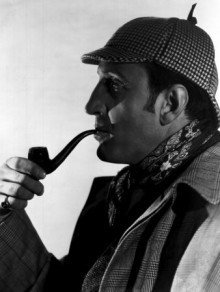
Later incarnations have exploited this side of Holmes. Indeed, in Sherlock Holmes’ personality traits are medicalised with Holmes referring to himself as a sociopath; in the Timeshift documentary, Cumberbatch says Holmes suffers from Asperberger’s Syndrome, and is probably on the autistic spectrum. This pathologising of Holmes is slightly troubling to me, in that it runs the risk of removing moral agency from the character, of making him impervious to the consequences of his actions (although Cumberbatch’s performance complicates this).
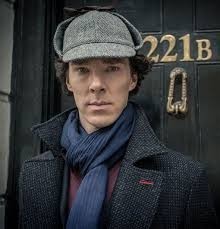
For me – to answer, finally, the question posed at the beginning of this blog – the best Sherlock Holmes was Jeremy Brett in Granada’s long-running series (although I was an adult when they were first broadcast) which can be seen almost any night of the week on a digital channel in the UK. Granada returned Holmes to his late-Victorian setting, reanimating Paget’s iconic silhouette. Brett’s Holmes could barely keep his inner turmoil in check; hunched and watchful, Brett’s impassive face concealed, one felt, huge reservoirs of emotion, glimpsed in the eyes and in occasional twitches of the mouth and flicks of the head. Both Brett and Cumberbatch are sometimes at their most eloquent and memorable in moments of stillness, where thought has yet to find form in action. (TV’s propensity for close-up is perhaps one reason why Holmes has been so successful on the small screen). It would have seemed an entirely behaviourist performance, constructed out of tics and mannerisms were it not for Brett’s emotional energy that seemed to reach through the screen and grab me by the throat. Most incarnations of Holmes, including the recent one, argue at some point in favour of cold, remorseless, deductive logic as their guiding principle: Brett demonstrated that logic was anything but cold, that thinking and feeling were not separate activities and that Holmes was at his most passionate when most fully rational. That intellectual activity is inherently emotionally engaging is a good lesson for academics to embrace.

Stephen Lacey is Professor of Drama, Film and Television in the Cardiff School of Creative and Cultural Industries at the University of Glamorgan. He has published widely on post-war British theatre and television drama, and is the author of British Realist Theatre: The New Wave in its Context 1956-65 (Routledge 1995) and Tony Garnett (MUP 2007). He is also co-editor of Popular Television Drama: Critical Perspectives (MUP 2005) and British Television Drama: Past, Present and Future (Palgrave 2000). He is currently writing a monograph on Cathy Come Home for BFI/Palgrave and co-directing a research project on representations of Wales in BBC drama, with Dr Who andTorchwood as case studies, in partnership with the BBC Trust in Wales. He is also a founding editor of Critical Studies in Television.


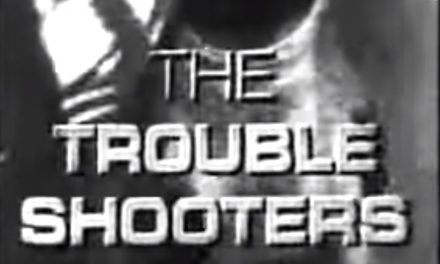
![BRUCE’S CHOICE <br> by not only Andrew Pixley [i]](https://cstonline.net/wp-content/uploads/2020/06/BrucesChoice_image02-440x264.png)
